How Green, Amon Can Help Fill USMNT's Pulisic Void vs. Colombia, Peru

For most of 2018, the U.S. men’s national team has lacked a creative spark, particularly in the center of the field and on the wing. It's not particularly difficult to draw a connection between the attacking inadequacy and the absence of a certain player.
In seven friendlies this year, the U.S. has generated more than 1.0 expected goals from open play once, in a 3-0 win over Bolivia in May.
Not coincidentally, that victory was the only U.S. game in which Christian Pulisic has appeared in 2018. Even on what was considered a down night for him, coming off a long season with Dortmund and a trying run with the U.S. that resulted in missing the World Cup, he led the team with 37 touches in the attacking third, covering the entire width of the field.
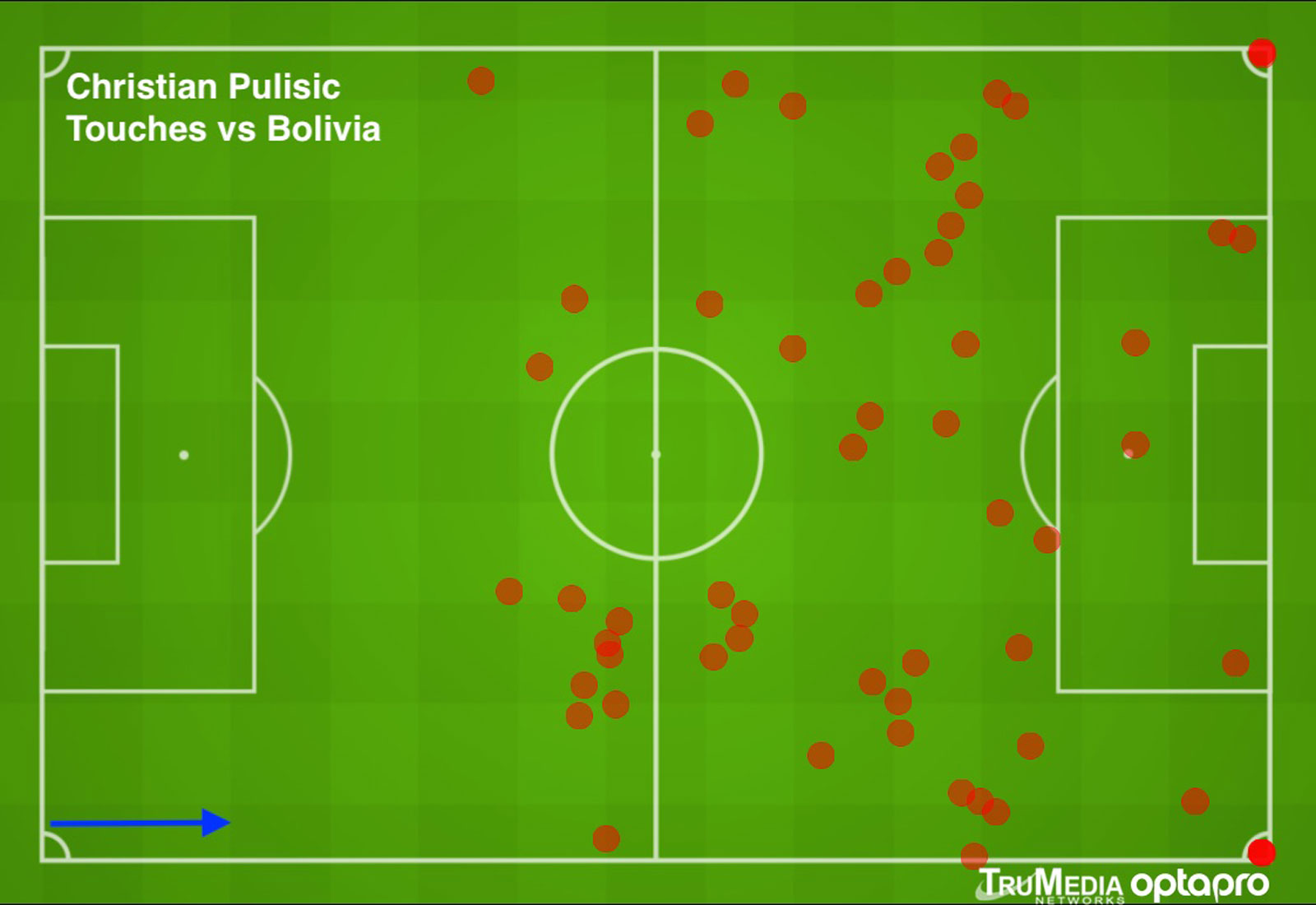
Pulisic won’t participate in the two October friendlies because of a torn calf muscle, meaning he'll have gone more than a calendar year playing just 89 minutes for the national team. The U.S. will miss him most in the center of the midfield, where he has no obvious replacement as a chief attacker and playmaker. In his absence, a Pulisic-shaped hole has appeared in numerousU.S.touch mapsthis year, including the team’s year-long heat map.
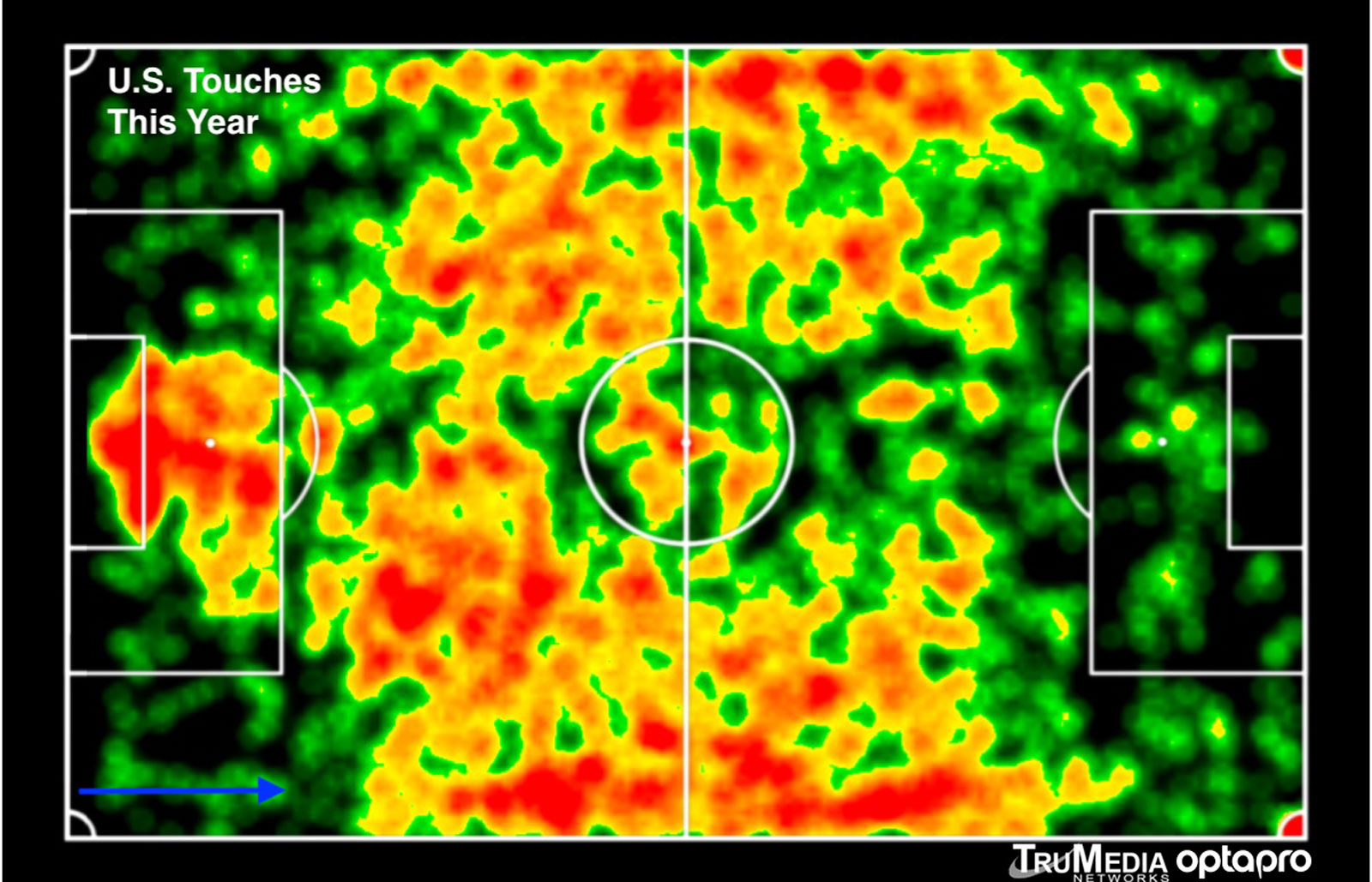
Assuming Pulisic can stay healthy, his international absence this year shouldn’t matter much in the long run, delaying only his integration with a young U.S. side and his climb up the U.S. record lists.
When he’s been healthy for his club, Pulisic has performed well at Dortmund, with two goals and an assist in 346 minutes across Bundesliga and Champions League play. Despite his limited playing time, he’s fourth on the team with six chances created, and he ranks second in touches in the attacking third.
Most impressive is Pulisic’s relentless willingness to take on defenders, primarily from the right wing. His 23 one-v-ones are tied for fourth among all players this Bundesliga season, and his 6.4 one-v-ones per 90 minutes lead the league (minimum 200 minutes). His success rate of 44 percent is slightly above league average, as is his success rate of 39 percent in the attacking third.
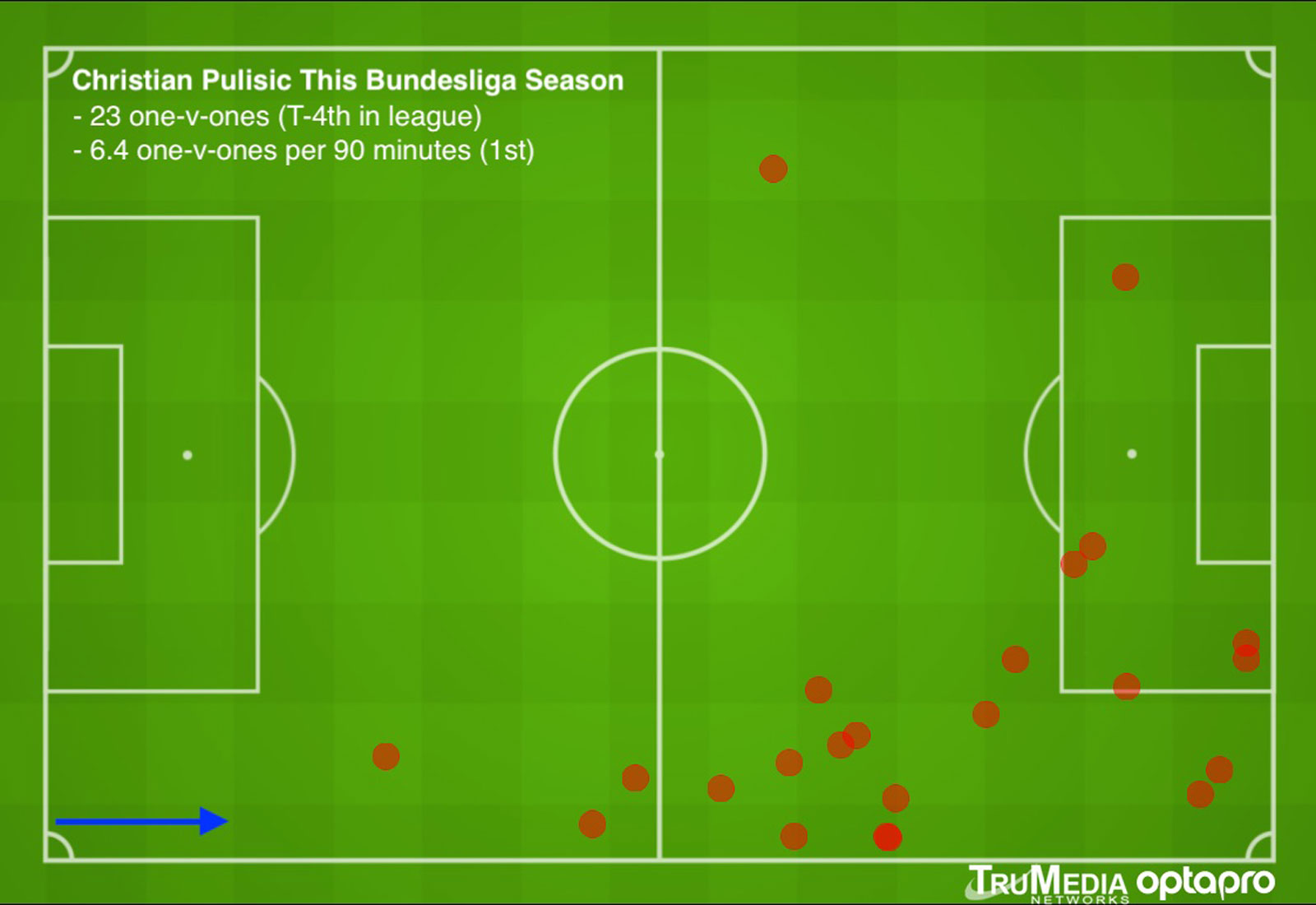
Until (and even after) Pulisic returns, the U.S. will continue auditions for attacking inspiration and has a pair of potential solutions–both old and new–in camp to cover the areas where he'll be missed most.
The first is a familiar name who may elicit groans from U.S. fans, but Julian Green offers qualities that can help. When he replaced the injured Weston McKennie in the 40th minute of the friendly versus Mexico last month, for instance, the U.S. attack finally showed signs of life.
After he entered, the (still only) 23-year-old led the team with 16 attacking-third touches, filling the previously-vacant area typically occupied by a No. 10. In part because of this, the U.S. had more than twice as many shots (five to two) and attacking-third touches (81 to 30) when Green was in the game.
Putting Green in the middle was not simply a desperation ploy. Though he has primarily played on the wing for the United States, he is playing centrally for Greuther Fürth in 2. Bundesliga this season.
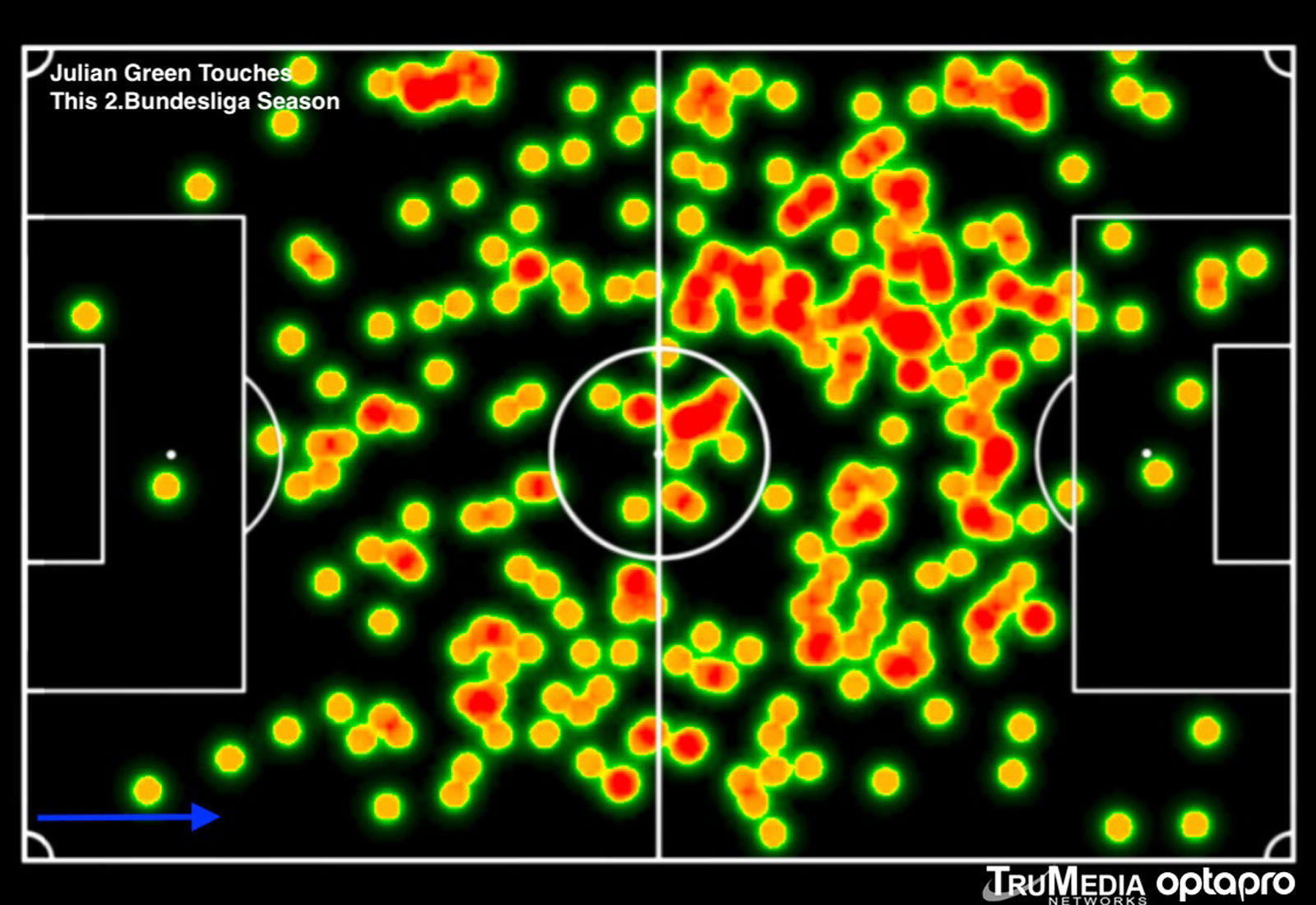
With three chances created in 607 minutes, finding teammates hasn’t been Green’s strength this season. He does lead Greuther Fürth with 21 shots, including 19 from outside the box, suggesting that he might be best suited for a second-striker role.
Even though Green’s club numbers remain unspectacular, he is at least playing regularly in a position of need for the U.S., and his flashes against Mexico earned him another look as a secondary option there.
As for on the flank, the shiny new toy of this camp is Jonathan Amon, a speedy winger who plays for Nordsjaelland in the Danish Superliga.
The 19-year-old South Carolina native received his first senior call-up after playing 18 league games and 1,082 minutes since his first professional game last November. Amon usually plays on the left side, and all 24 of his shots have come with his right foot, resulting in the shot chart of a classic inverted winger.
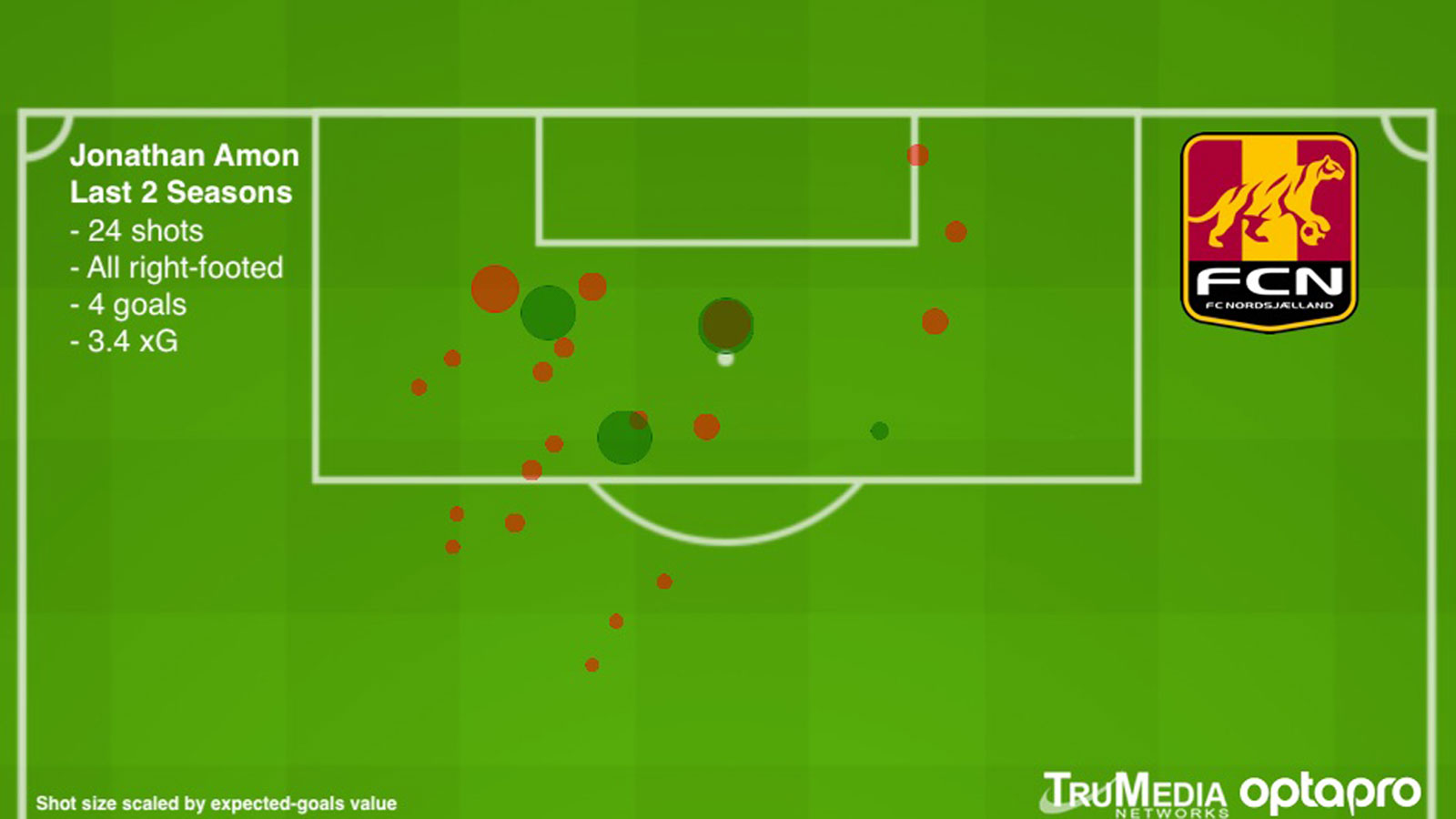
He has shown the ability to both cut inside and get to the end line, along with (dare I say it) a Pulisic-esque propensity to run at the defense.
With 73 one-v-ones in league play, Amon ranks 15th in the Superliga since his debut, and everyone ahead of him has played at least 400 more minutes. His 6.1 one-v-ones per 90 minutes are the best in the league in that span (minimum 800 minutes).
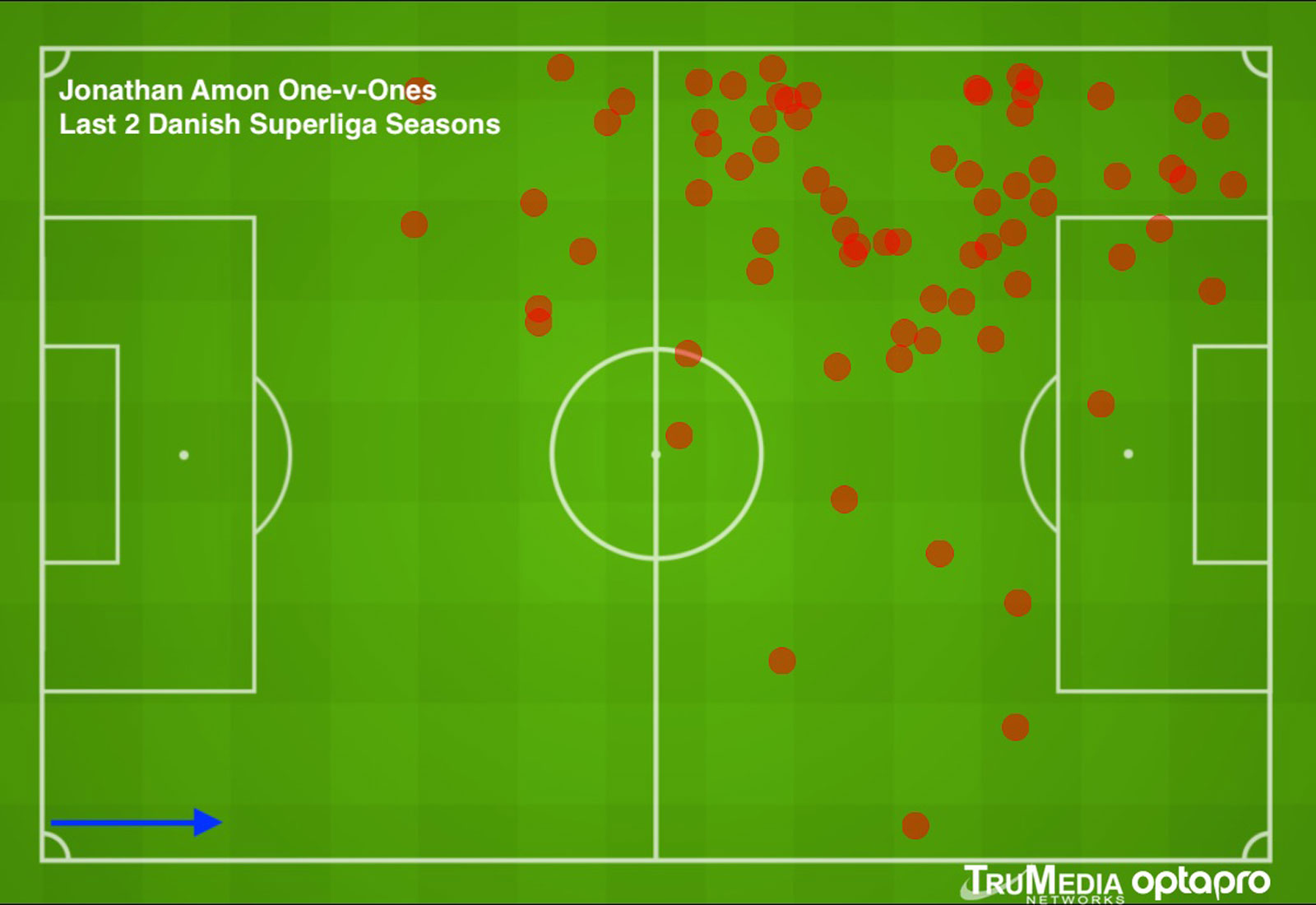
His success rate isn’t yet elite, sitting slightly below league average at 52 percent, and his success rate of 49 percent in the final third is a point above league average.
Amon has created a chance for a teammate every 68 minutes played, which ranks fifth on Nordsjaelland and may not sound impressive, though he isn’t far off Pulisic’s rate of a chance created every 64 minutes over the past two seasons.
Another area Amon can likely improve is his attacking-third passing. His 70 percent completion rate ranks last among Nordsjaelland’s nine regular attackers since his debut. That all adds up to a statistical profile that remains intriguing at the very least.
This week, many Americans should get their first extended looks at Amon’s capacity for charging by defenders, which has spawned highlights like these, leaving fans optimistic that he can fill the creative void that has haunted the U.S. team for the past year.
Paul Carr is Director of Content Development for TruMedia Networks, which collaborates with OptaPro on ProVision, a web-based soccer tool used by clubs and media for analytics, scouting and recruitment.
